Mesopotamian Heroes and Heroines: Legendary Figures and their Adventures
Welcome to the mesmerizing world of Mesopotamian heroes and heroines, where legendary figures embark on incredible adventures that have captivated the imaginations of people for centuries. In this article, we will delve into the remarkable tales of these iconic characters, exploring their birth, early life, exploits, and the challenges they faced on their quests for immortality, power, and love. From the great King Gilgamesh of Uruk to the fierce Goddess Ishtar, each story is filled with enthralling twists and turns, showcasing the rich myths and legends of ancient Mesopotamia. Join us on this enchanting journey as we uncover the bravery, wisdom, and extraordinary feats of these captivating heroes and heroines.
Contents
- Gilgamesh: The Great King of Uruk
- Inanna: The Queen of Heaven and Earth
- Marduk: The Champion of the Gods
- Ishtar: The Goddess of Love and War
- Conclusion
-
Frequently Asked Questions
- 1. Who was Gilgamesh and why is he considered a legendary figure?
- 2. What is the significance of Gilgamesh’s friendship with Enkidu?
- 3. Why did Gilgamesh embark on a quest for immortality?
- 4. What challenges did Gilgamesh face during his adventures?
- 5. Who was Inanna and what were her notable exploits?
- 6. What does Inanna’s descent to the Underworld signify?
- 7. Who was Marduk and what role did he play in Mesopotamian mythology?
- 8. What were the key attributes and powers of the goddess Ishtar?
- 9. What love affairs and scandals were associated with Ishtar?
- 10. What lessons can we learn from these Mesopotamian heroes and heroines?
- References
-
Frequently Asked Questions
- 1. Who were the Mesopotamian heroes and heroines?
- 2. What were the notable adventures of Gilgamesh?
- 3. What was the significance of Inanna’s descent to the underworld?
- 4. How did Marduk become the champion of the gods?
- 5. What were the love affairs and scandals surrounding Ishtar?
- 6. How did Gilgamesh’s friendship with Enkidu shape his character?
- 7. What role did wisdom and love play in Inanna’s life?
- 8. How did Ishtar revitalize Dumuzid?
- 9. What were the power dynamics associated with Marduk’s kingship?
- 10. How did Ishtar’s actions in the Epic of Erra affect humanity?
- References
- Read More
Gilgamesh: The Great King of Uruk
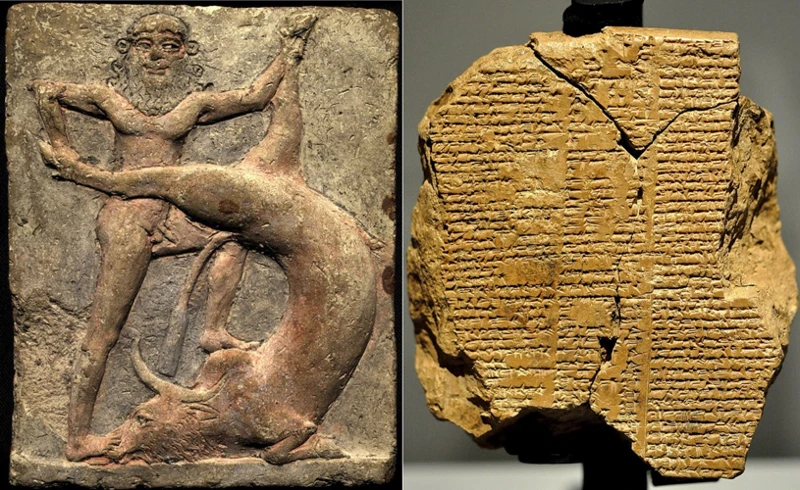
Gilgamesh, the mighty ruler of Uruk, stands as one of the most iconic figures in Mesopotamian mythology. As a demigod, Gilgamesh possessed superhuman strength and wisdom, granting him unparalleled prowess on the battlefield and in the realm of leadership. Legend has it that Gilgamesh was two-thirds divine and one-third human, born from the union of the goddess Ninsun and the former king Lugalbanda. His birthright granted him great power and a sense of invincibility, leading him to oppress his people. In response to their cries for help, the gods created Enkidu, a wild man who possessed equal strength to Gilgamesh. The two initially clashed in a fierce battle but soon formed an unbreakable bond and embarked on numerous adventures together. Gilgamesh’s most renowned quest was his relentless pursuit of immortality, driven by the fear of death. Despite facing various trials and tribulations, including a confrontation with the ferocious Bull of Heaven, Gilgamesh ultimately fails in his quest. This serves as a poignant reminder of the limits of mortality and the importance of cherishing the present moment. Gilgamesh’s story not only showcases his physical prowess and heroic deeds but also explores profound themes of friendship, mortality, and the pursuit of meaning in life. As we delve into the epic tale of Gilgamesh, we will witness his transformation from a proud and tyrannical king to a wise and compassionate ruler, leaving a lasting legacy in the annals of Mesopotamian mythology. For a deeper understanding of the mystical meanings behind planetary alignments, click here.
1. Birth and Early Life
Gilgamesh, the renowned King of Uruk, had a remarkable birth and early life that set him apart from ordinary mortals. According to ancient Mesopotamian myth, Gilgamesh was born to the goddess Ninsun and the former king Lugalbanda. This divine lineage bestowed upon him incredible strength and wisdom. As a child, Gilgamesh displayed exceptional potential, showing signs of greatness that would shape his destiny. His physical attributes were unparalleled, and his intelligence surpassed his peers. These extraordinary qualities earned him the admiration of his people and the envy of his rivals. Gilgamesh’s early life was marked by a sense of invincibility, which led him to oppress his subjects until their pleas for help reached the heavens. To provide him with a challenge and teach him humility, the gods sent Enkidu, a wild man who possessed equal strength to Gilgamesh. The two engaged in a fierce battle, resulting in neither emerging victorious. This encounter marked the beginning of an extraordinary friendship that would forever alter the course of Gilgamesh’s life. Together, Gilgamesh and Enkidu ventured on awe-inspiring adventures, leaving an indelible mark on the tapestry of Mesopotamian mythology. To explore the mystical meanings behind planetary alignments and their significance in ancient mythologies, click here.
2. The Quest for Immortality
Gilgamesh’s quest for immortality is a central theme in his legendary adventures. Motivated by a deep fear of death, Gilgamesh’s relentless pursuit takes him on a perilous journey filled with trials and hardships. In his quest, Gilgamesh seeks the wisdom and guidance of Utnapishtim, the only human granted eternal life by the gods. Utnapishtim recounts the story of the Great Flood and reveals that the gods had granted him immortality as a reward for surviving the cataclysmic event. Intrigued by this possibility, Gilgamesh sets out to find Utnapishtim, hoping to attain the same fate. Along his arduous journey, Gilgamesh encounters various challenges, including battles with mythical creatures and encounters with divine beings. However, despite his bravery and determination, Gilgamesh ultimately fails in his quest for eternal life. Utnapishtim enlightens Gilgamesh about the nature of mortality, teaching him that death is an inevitable part of the human experience. Through his quest, Gilgamesh learns the importance of accepting the limits of mortality and embracing the fleeting nature of life. This aspect of Gilgamesh’s story invites reflection on the universal human desire to defy death and attain eternal existence. For a fascinating exploration of the connection between meteor showers and ancient mythology, click here
3. Friendship with Enkidu
Gilgamesh’s friendship with Enkidu is a central aspect of his legendary tale. Enkidu, initially created by the gods as a wild and uncivilized counterpart to Gilgamesh, soon becomes his closest companion and confidant. It is through their friendship that Gilgamesh learns humility, empathy, and the true value of human connection. Upon their first meeting, the two engage in a fierce battle, but instead of harboring animosity, they recognize each other’s strength and form an instant bond. Enkidu’s simplicity and connection to nature serve as a grounding force for the ambitious and restless Gilgamesh. Together, they embark on adventurous quests, facing formidable challenges such as defeating the fearsome Humbaba, the guardian of the Cedar Forest. Their unwavering support for one another is tested when Enkidu tragically falls ill and dies. Gilgamesh is consumed by grief and embarks on a desperate search for eternal life. This episode highlights the depths of their friendship and the profound impact Enkidu had on Gilgamesh’s life. The bond between Gilgamesh and Enkidu serves as a reminder of the power of friendship and the transformative effect it can have on individuals. As we explore their remarkable journey, we are reminded of the enduring importance of genuine connections in our own lives. To learn more about the connection between meteor showers and ancient mythology, click here.
Inanna: The Queen of Heaven and Earth
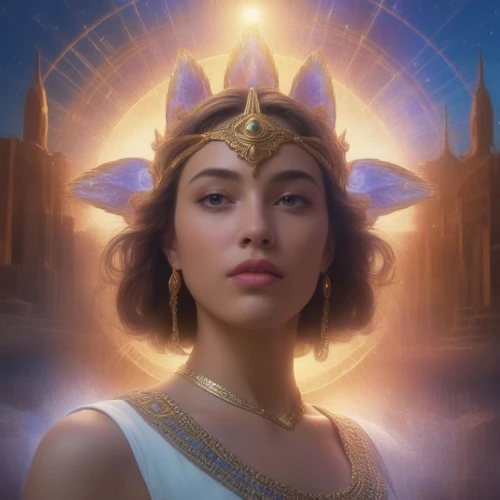
Inanna, the awe-inspiring Queen of Heaven and Earth, holds a prominent place in Mesopotamian mythology. She is a complex deity, embodying the dualities of love and war, fertility and power. Known as the goddess of beauty, sensuality, and wisdom, Inanna captivated mortals and gods alike with her alluring charm and divine presence. One of her most notable adventures is her courageous descent to the Underworld. In an act of self-discovery and rule-breaking, Inanna embarks on a journey to the realm of the dead, seeking to challenge and confront her sister Ereshkigal, the queen of the Underworld. This harrowing quest tests Inanna’s strength and resilience, as she must navigate the treacherous obstacles guarding the realm of the dead. Inanna’s descent to the Underworld explores themes of death, rebirth, and the cyclical nature of life. It is a powerful allegory for the transformative journey of the soul and the acceptance of the inevitable passage of time. Another notable tale in Inanna’s mythology is her conquest of Aratta, a rival city-state. In a display of her intellect and cunning, Inanna uses her divine powers to secure victory and establish her dominance over her adversaries. This story illustrates Inanna’s strategic prowess and her ability to wield both diplomatic and martial skills. Inanna’s divine attributes extend beyond power and conquest. She is also associated with love and wisdom, often depicted as a patron of fertile lands and fruitful harvests. Her relationships with mortal lovers symbolize the union between the divine and the earthly, highlighting her role in maintaining cosmic balance. Through her multifaceted nature and incredible adventures, Inanna embodies the complexities of human existence and the intricate tapestry of divine qualities. To explore the mystical meanings behind planetary alignments and their influence on ancient mythology, click here
1. The Descent to the Underworld
Inanna, the Queen of Heaven and Earth, embarked on a daring adventure known as the Descent to the Underworld. Filled with curiosity and a thirst for knowledge, Inanna sought to visit her sister, Ereshkigal, in the land of the dead. To prepare for her journey, she donned her magnificent garments and adorned herself with precious jewels. With each step she took into the realm of darkness, Inanna was challenged to relinquish a piece of her attire, symbolizing the shedding of her power and identity. Finally, stripped of all her regalia, she faced Ereshkigal, who unleashed a fury upon her. Inanna was killed and her body hung on a hook. However, through the help of Enki, the God of Wisdom, Inanna was revived and brought back to life. This mythic tale reflects the cyclical nature of life and death and emphasizes the importance of sacrifice and transformation. It also highlights the power of wisdom and collective efforts to overcome challenges. To explore the profound meanings behind planetary alignments, click here.
2. Conquest of Aratta
In the epic of Inanna, the Queen of Heaven and Earth, one of her notable adventures is the conquest of Aratta. Aratta was a prosperous city-state that possessed precious resources and valuable treasures. Inanna, driven by her ambition and desire for wealth, sought to subdue Aratta and claim its riches for herself. To achieve her goal, Inanna embarked on a perilous journey, crossing treacherous mountains and enduring harsh desert landscapes. Along the way, she encountered various obstacles and faced formidable adversaries. However, with her intelligence, cunning, and divine powers, Inanna overcame each challenge with grace and skill. She enlisted the help of her loyal servant, Ninshubur, who played a vital role in the success of her conquest. Together, they devised elaborate strategies and outsmarted their opponents, ultimately securing victory for Inanna and her kingdom. The conquest of Aratta not only showcased Inanna’s strength and determination but also highlighted her status as a powerful and influential goddess in Mesopotamian mythology. This story serves as a reminder of the ambition and audacity that can drive individuals to achieve their goals against all odds. For further insight into the mystical meanings behind planetary alignments, click here.
3. Wisdom and Love
Inanna, the Queen of Heaven and Earth, was not only revered for her beauty and power but also for her immense wisdom and capacity for love. Known for her cunning and strategic prowess, Inanna played a pivotal role in various conquests and conflicts in Mesopotamian mythology. One of the most notable tales surrounding Inanna is her conquest of Aratta, a rival city-state known for its wealth and prosperity. Inanna, driven by her desire for power and recognition, embarked on a daring mission to seize the treasures of Aratta and establish her own dominion. Through her cunning and charm, she successfully manipulated the people of Aratta and secured their allegiance. Inanna’s wisdom also extended to matters of the heart. She was often portrayed in love stories and romantic escapades, captivating the hearts of both gods and mortals. One such love affair was with the shepherd-god Dumuzid, also known as Tammuz. Their passionate romance symbolized the eternal cycle of life and death, as Dumuzid was destined to spend half of the year in the Underworld. Inanna, in her love and devotion, successfully orchestrated the revitalization of Dumuzid, ensuring that his return from the Underworld would bring vitality and abundance to the world. These tales of wisdom and love showcase the multifaceted nature of Inanna, a powerful goddess who embodied both the strategic prowess required for conquest and the depths of love and devotion. To shed light on the mystical meanings of planetary alignments and their influence on ancient mythology, click here.
Marduk: The Champion of the Gods
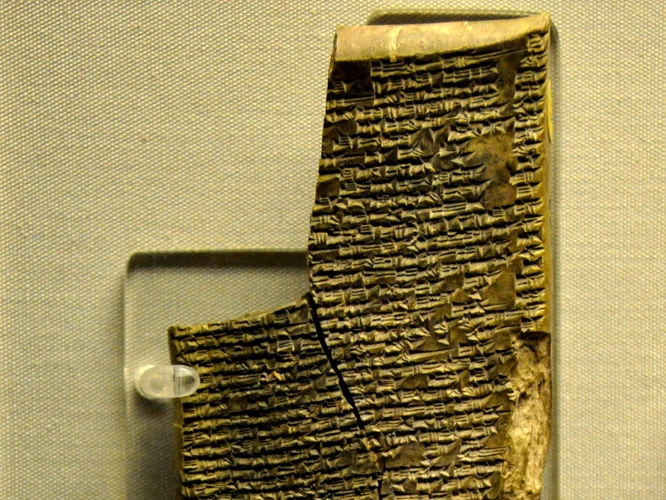
Marduk, the esteemed Champion of the Gods, held a prominent position in the pantheon of Mesopotamian deities. Known as the patron deity of Babylon, Marduk was revered for his strength, courage, and wisdom. According to ancient texts, Marduk played a pivotal role in the creation of the world. In a great battle, he defeated the chaotic sea goddess Tiamat and established order and harmony within the cosmos. This epic victory solidified Marduk’s reign and elevated him to the position of supreme god. As the ruler of the gods, Marduk’s power extended beyond the natural world and into the realm of human affairs. He became a symbol of kingship and authority, guiding the mortal kings of Babylon in matters of governance and justice. Marduk’s authority was further solidified through the Enuma Elish, a sacred text that detailed his divine attributes and the establishment of his cult. In this epic, Marduk’s valor and heroism are celebrated, showcasing his indomitable spirit in the face of adversity. As the Babylonian civilization flourished, Marduk remained at the heart of their religious and cultural practices, with magnificent temples dedicated to his worship. Delve into the mystical meanings of planetary alignments by clicking here.
1. The Creation of the World
In Mesopotamian mythology, the story of the creation of the world revolves around the mighty god Marduk. According to ancient texts such as the Enuma Elish, Marduk emerges as a powerful deity, entrusted by the other gods to defeat the primordial goddess Tiamat and create the world as we know it. Tiamat, representing chaos, threatens to engulf the universe, leading the gods to call upon Marduk to vanquish her and establish order. Marduk agrees to take on this daunting task, setting the stage for a cosmic battle. Armed with an array of weapons and accompanied by his winds and storms, Marduk confronts Tiamat, engaging in a fierce clash. Through his cunning and strategic thinking, Marduk manages to overpower Tiamat, slaying her and using her body to create the earth and the heavens. He then goes on to organize the stars, planets, and constellations, establishing a harmonious universe. Marduk’s victory solidifies his position as the champion of the gods and the supreme deity in the Babylonian pantheon. This epic tale not only illustrates the Mesopotamian belief in the power of gods over the forces of chaos but also emphasizes the significance of creation and order in the world. For a deeper understanding of the mystical meanings behind planetary alignments during ancient times, click here.
2. Battle against Tiamat
In the realm of Mesopotamian mythology, the epic battle against Tiamat stands as a defining moment in the ancient creation narrative. Tiamat, a primordial goddess of chaos, posed a significant threat to the order and harmony of the cosmos. The gods, fearing her destructive power, sought a champion to confront her and restore balance. Marduk, the fearless and ambitious god of Babylon, rose to the occasion and volunteered for the daunting task. Armed with an array of divine weapons and his unwavering determination, Marduk embarked on a fierce battle against Tiamat. The clash between the two deities was cataclysmic, with Tiamat unleashing her wrath in the form of monstrous creatures. Marduk, however, proved his valor by skillfully maneuvering through the chaos and strategically striking his adversary. In a climactic moment, Marduk delivered a fatal blow, piercing Tiamat’s heart and ending her reign of chaos. The victory of Marduk symbolized the triumph of order over chaos, establishing him as the champion of the gods and securing his position as the ruler of the cosmos. This epic battle not only showcases the raw power and bravery of Marduk but also serves as a metaphorical representation of the ongoing struggle between order and chaos in the world. It is a testament to the Mesopotamian belief in the necessity of maintaining balance and harmony in the universe. For a deeper exploration of the mystical meanings behind planetary alignments, click here.
3. Kingship and Power
Kingship and power were integral aspects of Mesopotamian society, and no figure embodies this more than Marduk. In Mesopotamian mythology, Marduk is celebrated as the Champion of the Gods and the ultimate ruler. He ascended to power through his remarkable achievements, including his pivotal role in the creation of the world. According to the myth, Marduk defeated the chaotic primordial goddess, Tiamat, and established order and harmony in the universe. This victory solidified Marduk’s position as the supreme deity and marked the beginning of his reign as the king of the gods. Marduk’s authority extended not only over the gods but also over human kingship. He bestowed upon earthly rulers the divine mandate to govern and ensure the well-being of their people. This belief in kingship as a sacred responsibility can be observed in the Mesopotamian political and social structures, where kings were considered both divine and human, acting as intermediaries between the gods and humanity. Marduk’s influence and power were deeply ingrained in the cultural fabric of Mesopotamia, shaping the beliefs and practices of its people. To learn more about the mystical meanings behind planetary alignments, click here.
Ishtar: The Goddess of Love and War
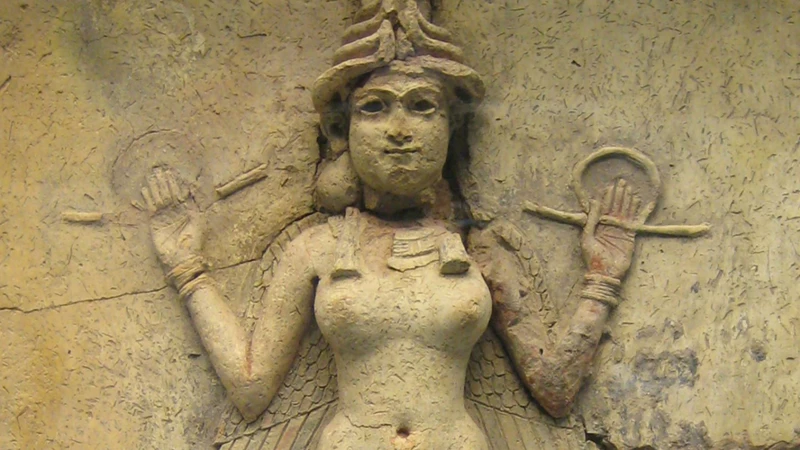
Ishtar, the captivating Goddess of Love and War, holds a prominent place in Mesopotamian mythology. Known as the Queen of Heaven, Ishtar was revered for her beauty, power, and the dual nature of her domains. Ishtar’s presence was felt in every aspect of life, from matters of the heart to the ferocity of battle. One of the most famous tales involving Ishtar is her love affairs and scandals, which often ended in tragedy. She had a tendency to fall deeply in love with mortal men, but these relationships were often met with heartbreak and despair. One such story revolves around the shepherd Tammuz, who captured Ishtar’s heart. Unfortunately, Tammuz met a tragic end, leading Ishtar to descend into the Underworld in a desperate attempt to bring him back to life. This legendary tale signifies Ishtar’s power over life, death, and resurrection. Another notable tale featuring Ishtar is the Epic of Erra, which depicts a catastrophic conflict between the gods and the forces of destruction. Ishtar plays a significant role in this epic as she seeks to restore order and balance amidst chaos. Finally, Ishtar is also associated with the revitalization of Dumuzid, the shepherd and consort of the goddess. Dumuzid’s annual death and revival symbolize the cycles of nature and fertility. Ishtar’s multifaceted nature as both a goddess of love and war highlights the complex duality of human existence. As we explore the captivating stories surrounding Ishtar, we gain insight into the intricate tapestry of Mesopotamian mythology and the profound impact of this powerful goddess on the ancient civilizations. For more information on the connection between meteor showers and ancient mythology, click here.
1. Love Affairs and Scandals
Love Affairs and Scandals were integral parts of the mythology of the goddess Ishtar. Ishtar, the complex and enigmatic Mesopotamian goddess of love and war, was known for her passionate and often tumultuous relationships. She was irresistibly beautiful, and her romantic entanglements with both mortals and gods were the stuff of legends. One of her most famous love affairs was with the shepherd king Dumuzid, also known as Tammuz. However, their relationship ended tragically when Dumuzid was dragged into the underworld by demons, causing Ishtar to descend into the realm of the dead to save him. This mesmerizing tale portrays Ishtar’s unwavering devotion and her willingness to confront death itself for the sake of love. However, her love life was not without scandal. Ishtar’s pursuit of married men, such as the hero Gilgamesh, often led to chaos and upheaval. In one instance, when Gilgamesh spurned her advances, Ishtar sought revenge by unleashing the monstrous Bull of Heaven upon the city of Uruk. This act of vengeance brought destruction and suffering to the land, highlighting the unpredictable and volatile nature of Ishtar’s emotions. As we explore Ishtar’s love affairs and scandals, we gain insight into the complex interplay between love, passion, and power in Mesopotamian mythology. For more information on the mystical meanings behind planetary alignments, click here.
2. The Epic of Erra
The Epic of Erra is a compelling tale within Mesopotamian mythology, delving into the destructive powers of war and the consequences of human actions. This epic revolves around the god Erra, who is the deity of war and plague. In this story, Erra grows discontent with humanity’s behavior and decides to unleash chaos and destruction upon the world. He seeks out Ishum, the god of fire and war, and convinces him to join his cause. Together, they bring devastation and misery to the lands, causing suffering and despair. The gods above, alarmed by the havoc wreaked by Erra, call upon the wise god Marduk to intervene. Marduk confronts Erra, urging him to reconsider his actions and reminding him of the divine order. Marduk argues that rather than indiscriminate destruction, it is better to strive for justice and balance. His words resonate with Erra, leading him to halt his rampage. The Epic of Erra serves as a cautionary tale about the destructive nature of war and the importance of upholding moral principles. It highlights the need for humanity to find harmony and seek alternatives to conflict, emphasizing the consequences of unchecked aggression. This epic reveals valuable insights into the complex Mesopotamian worldview, examining themes such as power, responsibility, and the peace that can be attained through understanding and compassion. For more information on the connection between meteor showers and ancient mythology, click here.
3. The Revitalization of Dumuzid
The story of the revitalization of Dumuzid, an important figure in Mesopotamian mythology, unveils a captivating tale of life, death, and rebirth. Dumuzid, also known as Tammuz, was a god associated with fertility and vegetation. According to legend, Dumuzid was beloved by the goddess Inanna, who chose him as her husband. However, tragedy struck when Dumuzid was slain by his own brother-in-law, the galla demons. Distraught by his death, Inanna descended to the Underworld to rescue him. In her absence, the land mourned the loss of Dumuzid, and vegetation withered away. After facing a series of trials and challenges in the Underworld, Inanna managed to bring Dumuzid back to life, rejuvenating the earth and restoring fertility. This myth symbolizes the cyclical nature of life, the death and rebirth of nature, and the eternal connection between the divine and the mortal realms. The revitalization of Dumuzid serves as a powerful reminder of the ongoing cycles of life, fertility, and the enduring bond between humanity and the natural world. For a deeper understanding of the mystical meanings behind planetary alignments, click here.
Conclusion
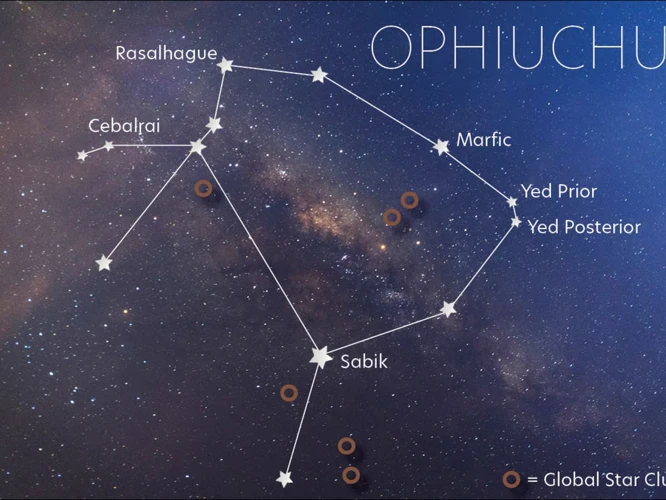
In conclusion, the tales of Mesopotamian heroes and heroines, such as Gilgamesh, Inanna, Marduk, and Ishtar, provide us with a glimpse into the rich mythology that shaped the ancient civilizations of Mesopotamia. These legendary figures embody the virtues and vices of humanity, grappling with existential questions, personal ambitions, and the complexities of their divine powers. Through their epic adventures, we witness the triumphs and failures of these heroes and heroines, gaining insight into the values, beliefs, and cultural frameworks of the ancient Mesopotamian society. The stories of Gilgamesh’s quest for immortality, Inanna’s descent to the Underworld, Marduk’s battle against Tiamat, and Ishtar’s scandalous love affairs not only entertain and thrill but also reflect the universal themes of love, power, mortality, and the search for meaning. These tales continue to resonate with audiences today, reminding us of our shared human experiences across the ages. Delving into the realm of Mesopotamian mythology opens up a doorway to a world of wonder and enchantment, where ancient beliefs and legends continue to captivate our imaginations. To explore more about the mystical meanings behind planetary alignments, click here.
Frequently Asked Questions

1. Who was Gilgamesh and why is he considered a legendary figure?
Gilgamesh was a powerful king of Uruk in Mesopotamian mythology. He is considered a legendary figure because of his exceptional strength, wisdom, and his epic quest for immortality that has been passed down through generations.
2. What is the significance of Gilgamesh’s friendship with Enkidu?
Gilgamesh’s friendship with Enkidu is significant as it highlights the transformative power of companionship. Enkidu, initially created to combat Gilgamesh, becomes his loyal friend and helps him grow as a person, teaching him empathy, humility, and the value of friendship.
3. Why did Gilgamesh embark on a quest for immortality?
Gilgamesh embarked on a quest for immortality out of fear of death. As a mortal being with god-like abilities, he sought to overcome the inevitable and attain eternal life. His journey brings forth deep introspection about the nature of mortality and the quest for meaning in life.
4. What challenges did Gilgamesh face during his adventures?
Gilgamesh faced various challenges during his adventures, including battles against powerful foes, such as the Bull of Heaven, and encounters with mythical creatures and gods. He also had to confront his own inner demons and learn important lessons about his responsibilities as a ruler.
5. Who was Inanna and what were her notable exploits?
Inanna was a prominent goddess in Mesopotamian mythology, known as the Queen of Heaven and Earth. Her notable exploits include her descent to the Underworld, where she faced trials and challenges, as well as her conquest of the land of Aratta and her embodiment of both wisdom and love.
6. What does Inanna’s descent to the Underworld signify?
Inanna’s descent to the Underworld symbolizes her journey into the realm of death and her eventual rebirth. It represents the cyclical nature of life, death, and renewal, as well as the sacrifices and challenges one must face in order to attain wisdom and transformation.
7. Who was Marduk and what role did he play in Mesopotamian mythology?
Marduk was a prominent deity in Mesopotamian mythology, revered as the Champion of the Gods. He played a central role in the creation of the world, leading the battle against the primordial chaos goddess Tiamat, and ultimately establishing order and kingship in the cosmos.
8. What were the key attributes and powers of the goddess Ishtar?
Ishtar, the Goddess of Love and War, possessed a wide range of powers and attributes. She was associated with fertility, love, beauty, and sexual desire, as well as war, violence, and power. Ishtar’s complex nature embodies the duality of life, reflecting the multifaceted aspects of human existence.
9. What love affairs and scandals were associated with Ishtar?
Ishtar was involved in various love affairs and scandals, including her pursuit of the shepherd Dumuzid and her passionate relationships with other gods and mortals. These tales highlight Ishtar’s insatiable desires, the consequences of her actions, and the implications of love and passion in the lives of both gods and humans.
10. What lessons can we learn from these Mesopotamian heroes and heroines?
From the adventures and exploits of these Mesopotamian heroes and heroines, we can learn valuable lessons about the human condition. Their stories delve into themes such as friendship, mortality, power, love, and the pursuit of meaning. They remind us of the complexities of life and the importance of personal growth, empathy, and embracing the fleeting moments we have.
References
- 6 Superheroes of Ancient Civilizations
- Mesopotamian Mythology 101: The Ultimate Guide
- Characters/Mesopotamian Mythology
Frequently Asked Questions

1. Who were the Mesopotamian heroes and heroines?
The Mesopotamian heroes and heroines were legendary figures who played significant roles in ancient Mesopotamian mythology and literature. They were revered for their extraordinary abilities, strength, intelligence, and courage.
2. What were the notable adventures of Gilgamesh?
Gilgamesh, the great king of Uruk, embarked on several notable adventures. These included his quest for immortality, his friendship with Enkidu, and his battles against various mythical creatures.
3. What was the significance of Inanna’s descent to the underworld?
Inanna’s descent to the underworld was a significant myth in Mesopotamian culture. It symbolized the cycle of life, death, and rebirth, highlighting the power of the goddess and her ability to conquer the realm of death.
4. How did Marduk become the champion of the gods?
Marduk became the champion of the gods through his triumph over the monstrous goddess Tiamat. This victory elevated him to the position of the supreme god in the Babylonian pantheon and symbolized the establishment of order over chaos.
5. What were the love affairs and scandals surrounding Ishtar?
Ishtar, the goddess of love and war, was known for her numerous love affairs and scandals. These included her infatuations with mortal men, her turbulent relationships with other gods, and the consequences of her passionate nature.
6. How did Gilgamesh’s friendship with Enkidu shape his character?
Gilgamesh’s friendship with Enkidu had a profound impact on his character. It taught him humility, empathy, and the value of companionship. Enkidu’s death also prompted Gilgamesh to search for immortality.
7. What role did wisdom and love play in Inanna’s life?
Wisdom and love were central to Inanna’s life. They guided her actions, decisions, and interactions with others. Inanna’s wisdom allowed her to navigate challenging situations, while her love brought her closer to her devotees and helped establish her as a beloved deity.
8. How did Ishtar revitalize Dumuzid?
Ishtar played a crucial role in revitalizing Dumuzid, her lover and the god of fertility and vegetation. Her descent to the underworld and subsequent bargaining with the caretakers allowed Dumuzid to return to the earthly realm, symbolizing the revival of nature during the spring season.
9. What were the power dynamics associated with Marduk’s kingship?
Marduk’s kingship represented the balance of power between the gods and humans. As the supreme god, Marduk possessed the ultimate authority and took on the role of a wise and just ruler. His kingship ensured the prosperity and stability of the Mesopotamian civilization.
10. How did Ishtar’s actions in the Epic of Erra affect humanity?
Ishtar’s actions in the Epic of Erra caused chaos and devastation among humanity. Her decision to unleash the warrior god Erra led to warfare and suffering. This myth served as a cautionary tale about the destructive consequences of human conflicts and the importance of seeking peace.







